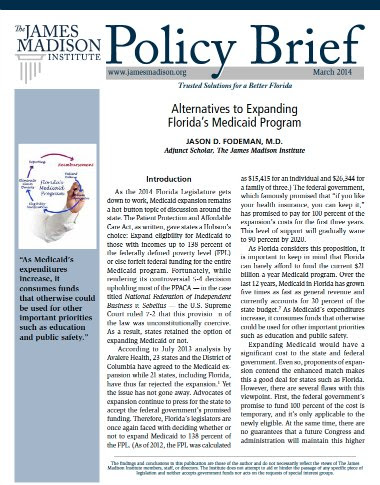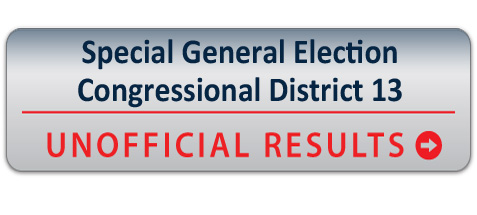One of the panel discussions in which I participated at the first annual Network for Public Education (NPE) conference was on investigative journalism. I chose to use my twelve minutes to only touch the surface on using IRS 990s (the tax forms for nonprofit organizations) as a research tool.
In this post, I would like to continue my tutorial. The information I include here I learned by my own wits and through the suggestions of others. My purpose is to assist those who wish to utilize information from tax forms in order to support their arguments in fighting corporate reform.
This will be one dry read– but a useful read for those seeking to improve their knowledge of nonprofit tax form navigation.
The Nonprofit Tax Form Search Engine
First of all, let me introduce a wonderful search engine for locating those nonprofit 990s: citizenaudit.org
One can search any term, including organization names and even names of individuals. I suggest putting quotation marks around search terms so that the search results include the exact term.
Sometimes the search engine boots out “404-not found” or a page noting “0 results.” If I am sure the org or person exists, I refresh the search and often get a result.
The search results include both the 990s for the organization itself and also a list of other orgs that connect to the search term.
Keep in mind that the common name of an organization might not be the formal name used on the tax forms. For example, “American Federation of Teachers” (AFT) is actually “American Federation of Teachers AFL-CIO Parent Organization” (Go here then here to see the AFT tax forms.) Also keep in mind that many nonprofits have other nonprofits associated with them. For example, the search results for the term “American Federation of Teachers” yields numerous tax forms for the local-level unions.
Search engine users should check to be sure that they are viewing forms for the intended organization. This is especially important for organizations with generic-sounding names, such as “Education Trust”.
(For an organization with such a generic name as Education Trust, I find it helpful to search for the CEO– in this case, “Kati Haycock”. Searching for the CEO yields a more precise search result.)
Finally, the listing of 990s for the organization is followed by a cross-referenced listing of other nonprofits whose 990s include the searched term. For example, a search of “Center for Union Facts” includes a cross-listing for the Gleason Family Foundation.
The cross-listings are helpful in identifying donors to the nonprofit of interest.
One can also use the search engine to investigate individuals’ involvements. For example, “Gideon Stein” is tied to Eva Moskowitz’s Harlem Success Academies and Green Dot charters (renamed Future Is Now). Another example is “Steve Barr”, who is connected to both Green Dot charters (renamed Future Is Now) and Parent Revolution (a spin-off from Barr’s Green Dot).
Navigating the 990
The 990 form was changed in 2008 (a different form is used for more recent returns). For my discussion, I will take my examples from more recent 990s.
Page One
The first page of the 990 includes the fiscal summary (Part I) and the signature block (Part II). The first info I note is the calendar or tax year of the return. For example, this 2011 Harlem Success Academy 5 form is actually for July 1, 2011 to June 30, 2012. I also look at the organization status. Most are 501(c)3 nonprofits. (This info is printed near the top of the form, in small print.)
Click here for types of 501(c) nonprofits, and here for the difference between 501(c)3 and 501(c)4.
Next, I notice when the form was filed (bottom of first page, next to preparer signature). In this case, the 990 was filed 04-23-13.
I might need to know these dates to determine if I am reading the correct form for, say, receipt of a Gates grant, or to determine when a key individual joined or left the organization.
The first page also includes a brief mission statement of the organization. (In this case, the reader is referred to Schedule O for continuation of the mission statement, which would not fit in the space provided. This is Eva Moskowitz’s school, and Eva usually has a lot to say.)
Other info on page one includes information on the current year and the prior year financial summary of the org. I can see how much the organization has gained or lost from one year to the next. I can see the org’s total assets (line 20) and whether the org is spending more than it is taking in (revenue less expenses– line 19).
It is possible for a multi-million-dollar organization to slowly be spending more than it is gaining in revenue (see AFT’s 2012 990 as an example). Thus, an organization might say that it can do without certain reform-connected donations; however, if the organization has been consistently outspending its revenue over the course of years, then in order to forego the questionable donations, the organization must compensate by either curbing its expenditures or otherwise raising its revenues.
In comparing organizations that share common board members, it is also useful to compare organization addresses. For example, the supposed “grass roots” Los Angeles Parent Revolution shared the same CEO and, initially, the same physical address as Green Dot charters.
Page Two
The second page (Part III: Statement of Program Service Accomplishments) has a more detailed mission statement (one can still need that Schedule O in order to elaborate– page 2 has a box to check if such is the case).
Page 2 includes information on the top three greatest expenses for the organization that tax year. (Grant money also needs to be identified here if such is part of a specific expense.) This information is important in determining the organization’s priorities. I find the descriptors on this page very helpful in determining an org’s prioritized actions (and, more important, the motives behind the actions).
From page 2 of the Harlem Success Academy 5 return, I learn that Moskowitz spent $2.8 million educating “approximately 241 students” (she reported using no earmarked grant money). That’s approximately $10,300 per student. PLUS she reported earning $3.65 million in revenue– thus exceeding her expenses by $850,000. (No other priority expenditures were noted on the page.)
In contrast, a review of page 2 of the 2012 990 for Education Trust shows me that Ed Trust did not earn revenue from its top three ventures– which underscores its dependence upon philanthropic cash as noted in this post.
Pages Three and Four
Pages 3 and 4 of the 990 are Part IV: the checklist for required schedules. This section includes 38 “yes/no” questions about activities of the nonprofit. A “yes” response requires a detailed answer– a “schedule” must be completed.
Applicable schedules are in alphabetical order at the end of the 990.
If a “yes” is indicated yet the associated schedule is not part of the return, or if it is left blank, something is fishy.
Of particular interest is item 4, on lobbying (requiring Schedule C). The American Legislative Exchange Council, known for neglecting to note its lobbying activities on this 2009 990 and some others, sometimes acknowledges its lobbying (as it did in on its 2012 990) but then notes that its lobbying cost nothing.
Fishy. ALEC is a corporation-legislator dating service.
Also of interest is item 23, a reference to a subsequent section on compensation from unrelated organizations (Part VII, question 5). An answer of “yes” requires completing Schedule J, which is the document that enabled me to know that Eva Moskowitz’s salary is partially funded by another nonprofit, MRM Foundation/Julia Greenblatt (recorded on the 2012 990 for her charter management organization, Success Academy Charter Schools, Inc).
Pages Five and Six
Of interest on page 5 (Part V: Statements Regarding Other IRS Filings and Tax Compliance): Item 2a indicates the number of employees; 4a is about “interest in or authority over a bank account in a foreign country” and could be useful for unmasking foreign-run charters. (The item requires naming the foreign country.)
Page 6 (Part VI: Governance, Management, and Disclosure): Item 1a is a count of the voting members of the governing body, including clarification on how many are “independent” (not compensated as an independent contractor, and more).
Item 2 concerns multiple family/business relationships; item 3, delegation of management duties to a management company. These items help determine conflicts of interest.
Item 8 asks whether meetings are documented. If an organization is engaging in questionable practices, including bypassing their own protocol, such info might come in handy if the organization denies having a record of a certain meeting. A discrepancy between the organization’s “nonexistent” documentation and its reporting on its 990 could be useful for enforcing records requests.
The second section f this part includes questions of enforcing conflict of interest policies (requiring explanation on Schedule O). I find that most 990s post some generic declaration in this section regardless of the activities in which they engage. A pat conflict of interest policy does not preclude information that flags conflicts of interest elsewhere on the 990.
Pages Seven and Eight
Page 7 is Part VII: Director, Employee, etc. Compensation. Here’s where one can find board members, officers, and employees; their hours, and compensation, if any.
Also included in Part VII (Section B) are the five highest-compensated “Independent Contractors.” For Moskowitz’s Harlem Success Academy 5, for example, one learns that Moskowitz paid her management company $282,630 to “manage” this co-located school of 241 students.
Those listed as independent contractors must provide an address– which, for the self-employed, is often a residence. In the case of Los Angeles Parent Revolution CEO Ben Austin– who was also an independent contractor for Green Dot charters– his address was listed as Beverly Hills even as he portrayed himself as a grass-roots “Los Angeles Parent” in his astroturf Revolution (see Schedule A of this 2007-08 990 for Austin’s Beverly Hills address– note that this return follows an older format).
It is this Section B on the union-bashing Center for Union Facts (CUF) 2012 990 that one reads of CUF CEO’s Richard Berman paying his own company a disproportionate amount of money as a “contractor.”
Also, in this section are three questions regarding excessive or unrelated compensation requiring Schedule J (discussed above re: Moskowitz’s salary from MRM Foundation).
Pages Nine thru Twelve
On page 9, Part VIII: Statement of Revenue, one can see info on government grants and other gifts. Page 10 includes Part IX, a complete breakdown of spending. I found this information particularly useful in my writing on Moskowitz. I could compare her spending breakdown to her assets as recorded on Part X: Balance Sheet, item 1o, land, buildings, and equipment, less depreciation (depreciation is a write-off). (Land, buildings, etc., is detailed on Schedule D, Part VI.)
The 990 has additional information, much more than I discuss in this post; however, what I have included is information I have found useful in exposing the extravagant and questionable spending of so-called reform-promoting nonprofits.
The 990 PF
Private foundations complete a 990 PF. The primary interest in 990 PF’s is likely the listing of the foundation’s contributions in the form of grants and loans. For example, the Walton Family Foundation (WFF) is known for its support of “choice” (charters and vouchers). This WFF 2011 990 includes the details of numerous loans made to charter schools (often in the form of an unsecured “revolving fund”).
The Bill and Melinda Gates Foundation has extensive 990s that list all grants paid out in a given year. An example is this Gates 2012 990. It is worth noting that Gates grants are not always fully paid in the year in which they are issued. Thus, one can compare grant information from the Gates grants search engine to the disbursement information for a specific year as noted on Gates 990s to roughly determine grant payment installments.
Time for My Exit
If I include Walton and Gates in my 990 PF discussion, it is only fitting to include the last of the Big Three, the Eli and Edythe Broad Foundation (here’s its 2012 990).
Let’s close this post with a bang.
From Broad (as in Broad Superintendents Academy), most of the larger, six- and seven-figure donations are for education privatization, not the least of which is $3.5 million to Students First, $2.3 million to KIPP charters, $1.5 million to Success Academy Charters, over $1 million dollars to the Council of Chief State School Officers (CCSSO), $775,000 to Green Dot charters, $600,000 to New Schools Venture Fund (whose CEO is now the proposed US Undersecretary of Education, Ted Mitchell); $345,000 to Parent Revolution, $334,000 to Rocketship charters; $300,000 to Teach for America (TFA), and $215,000 to Education Trust.
What can 990s tell us?
Public education is being wrested from the public. It is being handed over to those who wish to make major money by those who have major money.
Let’s continue to write about it, using evidence to support our work.
IRS 990s never looked so glamorous.
RELATED COLUMN: Common Core-frustrated teacher’s resignation letter: ‘My profession … no longer exists’
 Although a Medicaid expansion under the provisions of the Patient Protection and Affordable Care Act (PPACA) seems unlikely in the 2014 Legislative Session, Florida’s leaders will continue to grapple with the issue. A new policy brief from The James Madison Institute (JMI) explores the many problems with Medicaid and alternative solutions that can ensure those in need attain better access to timely medical care.
Although a Medicaid expansion under the provisions of the Patient Protection and Affordable Care Act (PPACA) seems unlikely in the 2014 Legislative Session, Florida’s leaders will continue to grapple with the issue. A new policy brief from The James Madison Institute (JMI) explores the many problems with Medicaid and alternative solutions that can ensure those in need attain better access to timely medical care.


















